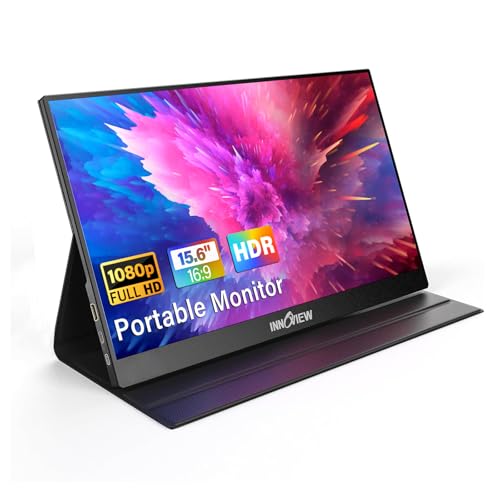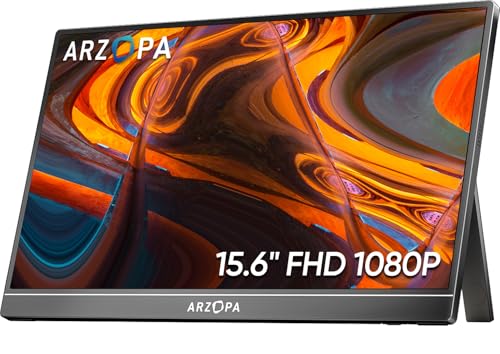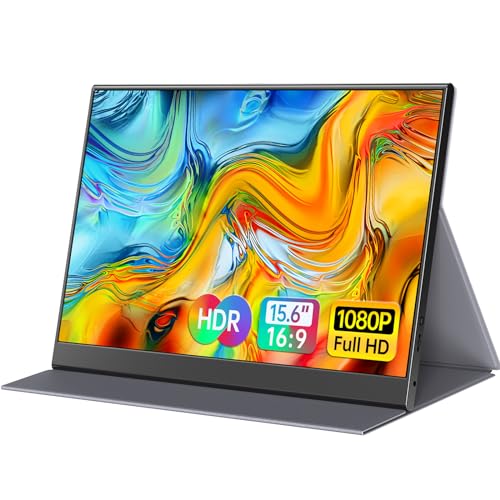Tech News
-
5 Affordable Portable Monitors on Amazon US
Portable monitors have shifted from niche accessories to everyday essentials for people who work, study, game, and create on the move. A second screen makes a measurable difference in productivity: side-by-side documents for research, a full timeline in video editors, an always-visible chat or reference window for coding, and a dedicated canvas for streaming dashboards. Unlike a desktop display, a good portable panel slides into a backpack, powers from a single USB-C cable, and sets up in seconds on a coffee shop table or hotel desk.
This category matured fast. Even budget 15.6-inch models now deliver crisp 1080p IPS visuals, wide viewing angles, and anti-glare coatings that hold up in mixed lighting. Dual connectivity has become standard, with USB-C DisplayPort Alt Mode for one-cable power and video on modern laptops, plus mini-HDMI as a universal fallback for consoles, cameras, and older notebooks. Many include integrated stands or folio covers, stereo speakers for quick demos, and simple HDR modes for media. Whether you are building a lightweight travel rig for a Steam Deck or Switch, augmenting a photo workflow on a MacBook, or turning a Windows ultrabook into a two-screen workstation, these monitors add meaningful utility without the size or price penalty of a full desktop panel.
To keep this guide practical, the picks below are in stock at the time of writing and chosen for a balanced mix of image quality, build, and value. All five support 1080p, USB-C, and mini-HDMI, and ship with a protective cover or stand so you can deploy them immediately. Before you buy, confirm that your primary device supports USB-C DP Alt Mode and ideally USB-C Power Delivery passthrough. Single-cable setups are the cleanest approach, but mini-HDMI plus a USB-C power lead works well when DP Alt Mode is not available.
Our Top 5 picks
1.MNN 15.6″ FHD Portable MonitorResults Provided by Amazon
Brief introduction: A popular all-rounder that nails the basics for work, study, and casual gaming with a slim frame, smart cover, and easy USB-C hookup.
Key specs:- 15.6-inch IPS panel, 1920 × 1080, wide viewing angles
- USB-C video and power, mini-HDMI input
- Anti-glare surface, stereo speakers, folio cover stand
- Ultra-slim and lightweight design
Why this pick: Strong fundamentals and quick setup make it an ideal first portable monitor. Image clarity is solid for documents and media, and the folio pulls double duty as a stable stand for fast desk drops between meetings.
2. KYY 15.6″ 1080p Portable Monitor (K3)
Results Provided by Amazon
Brief introduction: A long-standing Amazon favorite that travels well, with a sturdy metal shell, full cable kit, and extras that reduce total cost.
Key specs:- 15.6-inch IPS, 1920 × 1080 with HDR support
- USB-C video and power, mini-HDMI input
- Includes smart cover, screen protector, and cables
- Dual speakers, 3.5 mm audio jack
Why this pick: Value dense and commuter friendly. You get everything in the box to connect laptops, handhelds, and consoles, and the metal chassis plus included protector help it survive daily travel.
3. InnoView 15.6″ FHD Portable Monitor (INVPM406)
Results Provided by Amazon
Brief introduction: Tuned for productivity with a bright, color-consistent IPS panel and a protective travel sleeve.
Key specs:- 15.6-inch IPS, 1920 × 1080
- USB-C and mini-HDMI, stereo speakers
- Slim 0.2-inch profile, included case
- Works with laptops, consoles, and phones
Why this pick: InnoView balances price and picture quality. The INVPM406 is a reliable canvas for spreadsheets, timelines, and editing panels without adding bulk, ideal for hybrid workers who live out of a backpack.
4. ARZOPA 15.6″ FHD Portable Monitor
Results Provided by Amazon
Brief introduction: A lightweight, travel-ready panel with dual USB-C and a simple kickstand form factor that saves desk space.
Key specs:- 15.6-inch 1080p IPS, slim 0.36-inch body, about 1.6 lb
- Dual USB-C plus mini-HDMI for broad compatibility
- Kickstand design for quick angle adjustments
Why this pick: The thin chassis and dual USB-C make pairing with modern laptops and handhelds painless. The kickstand offers faster setup than folio-only designs, especially on cramped surfaces.
5. ForHelp 15.6″ 1080p Portable MonitorResults Provided by Amazon
Brief introduction: A budget-friendly IPS option that covers the essentials for school, travel, and light gaming without inflating costs.
Key specs:- 15.6-inch IPS, 1920 × 1080, wide viewing angles
- USB-C video and power, mini-HDMI input
- Anti-glare, flicker-reduction and low blue light language
- Ultra-thin design with included cover
Why this pick: Delivers the must-have features at a friendly price. A smart backup screen for students or anyone who wants extra workspace without overspending.
Final thoughtsPortable monitors are one of the highest impact upgrades you can make to a mobile workflow. The five models above cover the most common needs. If you want an easy out-of-box experience with a full accessory kit, MNN and KYY are safe, versatile choices. If your priority is a bright, consistent 1080p canvas for productivity, InnoView fits well. Travelers who need fast setup in tight spaces will appreciate ARZOPA’s slim chassis and dual USB-C. If maximum value is the goal, ForHelp keeps costs in check while hitting the essentials.
To get the most from any portable panel, add a couple of small accessories. A compact aluminum stand or clamp improves ergonomics, and a short right-angle USB-C cable keeps your desk tidy. Calibrate brightness to match your laptop, and consider a privacy filter for shared workspaces. Gamers should confirm a stable 60 Hz mode with their console or handheld and check input lag reports. Creators who care about color can look for sRGB coverage claims and plan to fine-tune with software. Finally, always skim the listing for warranty terms and return windows. Inventory and pricing on Amazon can move quickly, but with these ASINs you can verify stock at a glance and publish with confidence.
-
ES Geforce RTX 5090 Gaming 1-Slot GPU Cooler from Alphacool
Alphacool International GmbH, headquartered in Braunschweig, has been one of the pioneers in the field of PC water cooling for over two decades. With one of the broadest product portfolios in the industry and extensive expertise, Alphacool is once again setting new standards: the product range is now being expanded with the new ES GeForce RTX 5090 Gaming 1-Slot Design GPU cooler.
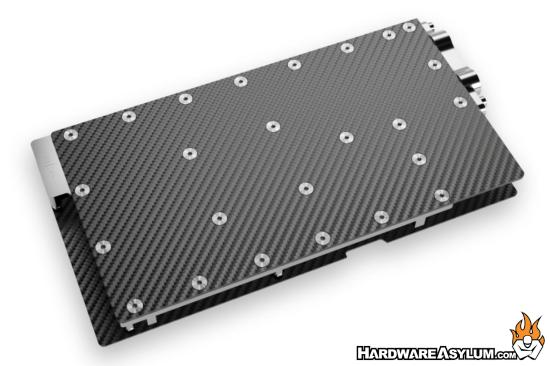
The ES GPU coolers have been specially developed for use in server cases and workstations. Thanks to their slim 1-slot design and rear-mounted connectors, they can be easily integrated into densely equipped systems and stacked without blocking adjacent PCIe slots. This simplifies tubing and enables a space-saving, efficient integration into the water loop.
As always, Alphacool relies on high-quality materials. The front and backplate are made of a lightweight yet robust carbon plate, while all water-bearing elements are manufactured from chrome-plated copper. This combination guarantees top quality, durability, and additional protection for the cooling block.
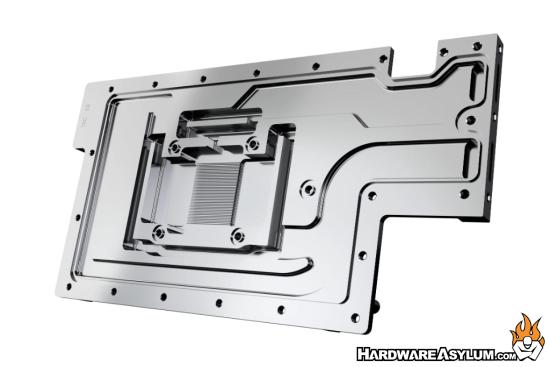
Technically, the cooler has been completely redesigned. Using state-of-the-art simulation software and extensive testing, both the cooling base and jet plate have been optimized – ensuring maximum cooling performance for the latest Nvidia GeForce RTX generation.
Compatibility:
- Gigabyte GeForce RTX™ 5090 GAMING OC 32G
- Gigabyte GeForce RTX™ 5090 WINDFORCE 32G
- Gigabyte GeForce RTX™ 5090 WINDFORCE OC 32G
-
HighPoint’s Rocket 7638D: Eliminating AI Bottlenecks with Gen5 PCIe Switching
The relentless growth of Artificial Intelligence (AI) and Machine Learning (ML) is pushing the limits of current computer hardware. As models become larger and datasets balloon into terabytes – even petabytes – a critical bottleneck emerges: data access. GPUs, the engines driving AI, often sit idle, starved for data. HighPoint Technologies addresses this challenge with the Rocket 7638D, a PCIe Gen5 switch adapter designed to unlock the full potential of AI workloads. This innovative solution provides dedicated high-speed pathways between GPUs and NVMe storage, dramatically improving performance and efficiency. For professionals involved in AI model training, deep learning inference, and large dataset processing, the Rocket 7638D represents a significant leap forward.
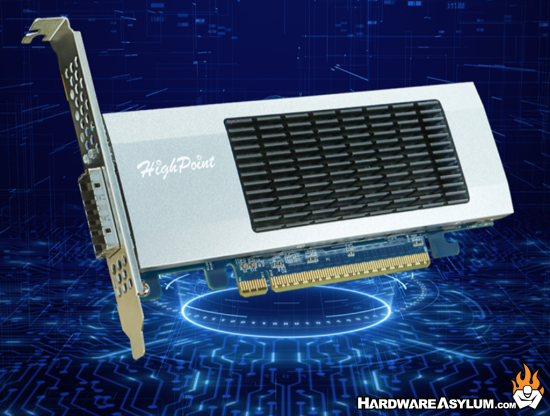
The core problem lies in shared PCIe bandwidth. Modern systems often force GPUs and NVMe storage to compete for the same PCIe lanes. This contention creates latency, reduces throughput, and ultimately limits GPU utilization. As HighPoint explains, simply adding more PCIe lanes doesn’t solve the issue due to limitations in chipset uplinks and PCIe bifurcation. The Rocket 7638D circumvents this by acting as a dedicated traffic controller. It boasts 48 lanes of internal bandwidth, intelligently allocating up to 16 lanes each for external GPU expansion (via CDFP-CopprLink), NVMe storage (through dual MCIO 8i ports), and upstream host connectivity. This ensures both the GPU and NVMe storage receive a full 64GB/s of Gen5 bandwidth simultaneously, eliminating the performance chokehold of shared resources. This is particularly crucial for applications leveraging GPU Direct Storage (GDS), allowing the GPU to bypass the CPU and directly access NVMe media.
The Rocket 7638D achieves this dedicated bandwidth through its core architecture as a PCIe Gen5 switch. Unlike traditional adapters that rely on the motherboard’s PCIe lanes and potentially suffer from bandwidth sharing, the Rocket 7638D creates dedicated pathways. This is akin to building a separate highway directly between the GPU and NVMe storage, bypassing congestion. This internal switching capability is what allows for the simultaneous allocation of up to 16 lanes to each component, maximizing throughput and minimizing latency. This is a fundamental difference that separates it from simpler PCIe bifurcation solutions.
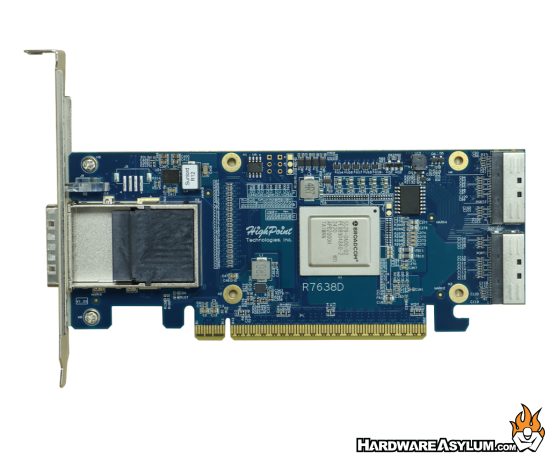
This dedicated architecture yields significant benefits. For AI researchers and data scientists, the Rocket 7638D accelerates model training by enabling faster streaming of large datasets to GPUs, reducing epoch times and overall training duration. In real-time inference pipelines – vital for applications like autonomous driving, financial modeling, and medical diagnostics – the adapter facilitates rapid data ingestion and quick GPU responses. It also streamlines data preprocessing tasks, enabling parallelized GPU compute and NVMe transfers for high-speed data augmentation. The solution supports scalable AI infrastructure, ensuring each GPU in a multi-GPU node has dedicated bandwidth without compromising NVMe performance, making it ideal for building powerful AI server infrastructure and high-performance computing clusters.
HighPoint’s commitment to signal integrity is also noteworthy. At Gen5 speeds, maintaining a robust connection is paramount. The Rocket 7638D leverages HighPoint’s innovative Gen5 PCI-SIG CopprLink certified cabling solution to provide a robust, enterprise-grade connection between the host platform and external GPU. This guarantees reliable data transfers at full x16 Gen5 bandwidth where even minor signal degradation could otherwise result in performance loss or exacerbate the threat of latency. Beyond hardware, the Rocket 7638D offers broad compatibility, supporting both x86 (Intel/AMD) and ARM platforms, and integrating seamlessly with all major operating systems thanks to native NVMe driver support. This simplifies upgrades and minimizes compatibility concerns for existing workstation upgrades and server deployments.
Ultimately, the HighPoint Rocket 7638D isn’t just another adapter; it’s a strategic investment for organizations serious about maximizing their AI infrastructure. By eliminating data bottlenecks and delivering dedicated PCIe Gen5 bandwidth, it empowers GPUs and NVMe storage to operate at their full potential. This translates to faster model training, smoother inference, and a scalable foundation for the next generation of AI workloads. For anyone looking to build or upgrade an AI development workstation or a powerful machine learning server, the Rocket 7638D deserves serious consideration.
-
Crucial T710 Gen5 Solid State Drive Review @ ThinkComputers
ThinkComputers reviewed the Crucial T710 as a high-performance PCIe 5.0 drive using the Silicon Motion SM2508 controller paired with Micron’s 276-layer 3D TLC NAND and a DRAM cache. The drive is rated for up to 14,500 MB/s read and 13,800 MB/s write performance. In benchmark testing, it achieved performance very close to those specs, showcasing how modern TLC Gen5 drives have matured. The drive excels in workloads where power efficiency and burst throughput matter, making it a compelling option for both desktop and portable systems.
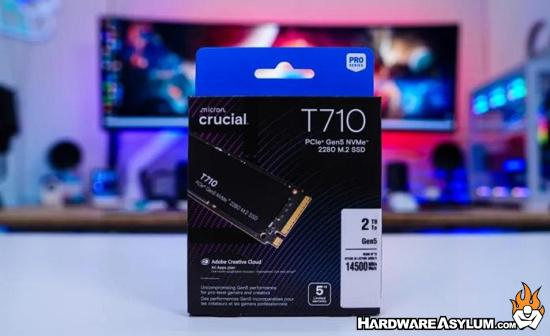
"Crucial is back with another super-fast PCI-Express 5.0 NVMe solid state drive in their brand new T710. This drive makes use of a different controller than we saw on their T700 and T705 drives which we previously reviewed. Here we have the 8-channel Silicon Motion SM2508 controller. This controller should run cooler, which will definitely be a relief from what we saw on the first generation of PCI-Express 5.0 drives. Crucial has teamed this drive with Micron 276-layer 3D TLC NAND and you are going to get a DRAM cache, which is also made by Micron. Rated for speeds of up to 14500 MB/s read and 13800 MB/s write this is going to be one of the fastest drives out there! Read on as we see what this drive can do!"
In their conclusion, the review noted that while the T710 may not dramatically outperform its predecessor across all metrics, its lower power consumption and solid real-world gains justify its existence. ThinkComputers pointed out that the 1 TB variant may offer the best balance of performance and value among the T710 SKUs. For users prioritizing efficiency, responsive speeds, and modern PCIe 5.0 support, the T710 is strongly recommended as a competitive option in its class. -
Dying Light: The Beast Performance Benchmark @ TechPowerUp
TechPowerUp evaluated Dying Light: The Beast across more than 30 graphics cards, highlighting how the game scales from entry-level to high-end hardware. At 1080p and 1440p most modern GPUs delivered strong results, with upscaling technologies like DLSS and FSR helping midrange setups achieve smoother frame rates. However, the game places significant pressure on VRAM, and cards with less than 8 GB often experience stuttering or dips in 1 percent lows when moving through detailed areas. Handheld PCs and laptops struggled the most when VRAM limits were reached, showing how demanding this title can be in real-world scenarios.

Dying Light: The Beast improves core mechanics with smoother parkour, satisfying melee combat, and the introduction of Beast Powers, while delivering a strong story. In our performance review, we examine its graphical fidelity, VRAM usage, and how well it runs on a variety of modern GPUs.
In conclusion, TechPowerUp found Dying Light: The Beast to be a well-optimized PC release that provides a good balance between visuals and performance, so long as settings are tuned to match the hardware. While low-VRAM systems and compact builds face hurdles, the majority of players with reasonably modern GPUs can expect a smooth experience. The game rewards higher-end setups with consistently strong results, making it one of the better optimized recent titles in terms of both playability and visual quality. -
LIAN LI Launches 8.8” Universal Screen with Flexible Mounting Solution
September 19th, 2025, Taipei, Taiwan – LIAN LI Industrial Co., Ltd., a leading manufacturer of chassis and PC accessories, is proud to introduce the 8.8" Universal Screen (US88v1), a versatile USB-powered secondary display. Featuring a crisp 1920x480 IPS panel with a 60Hz refresh rate and 500 nits of brightness, the screen delivers real-time system stats, media, or personalized content without occupying a GPU display output. Controlled via L-Connect 3, users can upload videos, images, and synchronize the built-in diffused ARGB lighting with their system. The included adjustable bracket allows for tilt, rotation, and height adjustment on both the screen and the mount, with multiple mounting options, including placement on top of 120mm and 140mm fans, case panels, or adhesive attachment. The 8.8” Universal Screen is available in black or white at an MSRP of $84.99 USD.
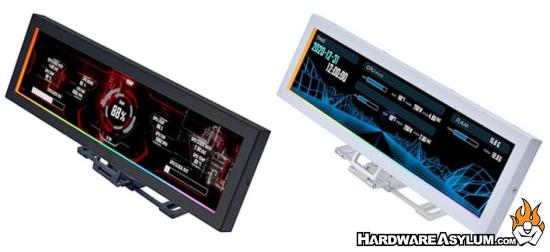
Versatile Wide Display
?Unlike traditional secondary displays, the 8.8" Universal Screen connects via USB, either through a 9-pin motherboard header or Type-A extension, so it doesn’t use any of your graphics card’s display outputs. This plug-and-play setup provides a clean, independent way to display hardware statistics, custom media, or animated preset overlays without consuming GPU resources.Flexible Mounting
?The included mounting bracket is designed for maximum versatility, featuring a mini-LCD mount that can be positioned in three different locations behind the screen and supports tilt, vertical, horizontal, and rotational adjustments. This precise mechanism allows users to fine-tune the screen’s position inside the case for ideal visibility and alignment. The bracket attaches with standard fan screws, making it easy to secure the screen to 120mm and 140mm fan frames. It also offers a flat surface mounting option using the provided adhesive pad.L-Connect 3 Powered
?Surrounding the display is a built-in ring of diffused ARGB lighting that provides dynamic ambient illumination to the 8.8" Universal Screen. Both the screen content and lighting effects are fully controllable through L-Connect 3, allowing users to upload custom videos or images, switch display modes, and synchronize lighting patterns with the rest of their system.Availability
?The 8.8” Universal Screen (US88v1) is available on September 19, 2025, at an MSRP of $84.99 for the black or white version.For more information on the 8.8” Universal Screen (US88v1), please visit: https://lian-li.com/product/8-8inch-universal-screen/?
Specifications
Model
SM088X
SM088W
Dimensions
237mm (L) x 73mm (D) x 13mm (H)
Color
Black
White
LCD Type
IPS LCD
Size
8.8”
Refresh Rate
60 Hz
Resolution
1920x480
Screen Brightness
500 nits
Rated Voltage
5V
Input Power
3.8w
The 8.8” Universal Screen (US88v1) is available at Newegg (9:00 AM EST):
Black: https://www.newegg.com/p/pl?d=9SIAFSTKJN0933?
White: https://www.newegg.com/p/pl?d=9SIAFSTKJN0934?The 8.8” Universal Screen (US88v1) is available at Amazon (9:00 AM EST):
Black: https://www.amazon.com/dp/B0FKH3NK1H?
White: https://www.amazon.com/dp/B0FKH57YQP?The 8.8” Universal Screen (US88v1) is available at Caseking (3:00 PM CEST):
Black: https://www.caseking.de/GELI-985.html?
White: https://www.caseking.de/GELI-986.html?
?
The 8.8” Universal Screen (US88v1) is available at Overclockers UK (2:00 PM BST):
Black: www.overclockers.co.uk/lian-li-8.8-screen-with-universal-mount-black-coo-lia-06080.html?
White: www.overclockers.co.uk//lian-li-8.8-screen-with-universal-mount-w-coo-lia-06081.html?The 8.8” Universal Screen (US88v1) is available at SCAN (2:00 PM BST):
Black: https://www.scan.co.uk/products/88-lian-li-universal-screen-ips-display-500-nits-60hz-usb-20-modular-stand-black
?White: https://www.scan.co.uk/products/88-lian-li-universal-screen-ips-display-500-nits-60hz-usb-20-modular-stand-white -
KLEVV CRAS V RGB DDR5-6000 32GB Memory Kit Review @ ThinkComputers
ThinkComputers, known for their practical and user-focused reviews, found the Klevv Cras V RGB to be a solid performer offering a good balance of price and performance. The reviewer was impressed by the kit's ability to handle demanding workloads, including gaming and content creation, while maintaining stability and responsiveness. They highlighted the kit's attractive RGB lighting, which is customizable through Klevv's Lab software, and its robust build quality, featuring a sleek aluminum heatspreader. The reviewer also noted the kit's competitive pricing, making it an attractive option for budget-conscious builders.
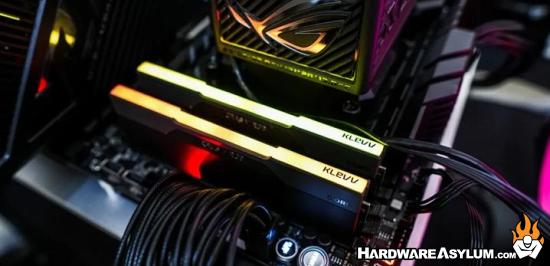
"Earlier this year I had the chance to take a look at my first product from KLEVV, which was their URBANE V RGB DDR5-7600 32GB Memory Kit. I liked that memory kit quite a lot so I was delighted when they offered to send over their CRAS V RGB DDR5 memory. Compared to the URBANE, the CRAS has a more industrial design which I actually prefer. The memory is available in white or black colorways and of course we have RGB. Today we are going to be taking a look at the KD5AGUA80-60B280G kit which is a 32GB (2x 16GB) kit that runs at 6000 MHz with timings of 28-36-36-76 at 1.4V. Let's take a look and see what this memory is all about!"
Beyond the raw performance numbers, ThinkComputers praised the ease of overclocking the kit, allowing users to squeeze even more performance out of their system. They also appreciated the well-designed heatspreader, which effectively kept temperatures in check even under heavy load. While the reviewer did mention that the kit didn't quite reach the absolute top of the performance charts, they concluded that the Klevv Cras V RGB offers excellent value for the price. For those seeking a visually appealing and reliable DDR5 kit without breaking the bank, this kit is definitely worth considering. -
NVIDIA and Intel to Develop AI Infrastructure and Personal Computing Products
Intel to design and manufacture custom data center and client CPUs with NVIDIA NVLink; NVIDIA to invest $5 billion in Intel common stock
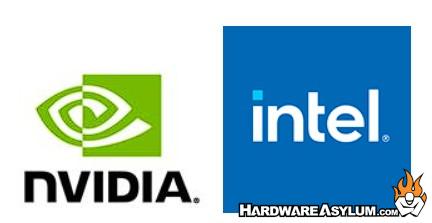
SANTA CLARA, Calif., Sept. 18, 2025 (GLOBE NEWSWIRE) -- NVIDIA (NASDAQ: NVDA) and Intel Corporation (NASDAQ: INTC) today announced a collaboration to jointly develop multiple generations of custom data center and PC products that accelerate applications and workloads across hyperscale, enterprise and consumer markets.
The companies will focus on seamlessly connecting NVIDIA and Intel architectures using NVIDIA NVLink — integrating the strengths of NVIDIA’s AI and accelerated computing with Intel’s leading CPU technologies and x86 ecosystem to deliver cutting-edge solutions for customers.
For data centers, Intel will build NVIDIA-custom x86 CPUs that NVIDIA will integrate into its AI infrastructure platforms and offer to the market.
For personal computing, Intel will build and offer to the market x86 system-on-chips (SOCs) that integrate NVIDIA RTX GPU chiplets. These new x86 RTX SOCs will power a wide range of PCs that demand integration of world-class CPUs and GPUs.
NVIDIA will invest $5 billion in Intel’s common stock at a purchase price of $23.28 per share. The investment is subject to customary closing conditions, including required regulatory approvals.
“AI is powering a new industrial revolution and reinventing every layer of the computing stack — from silicon to systems to software. At the heart of this reinvention is NVIDIA’s CUDA architecture,” said NVIDIA founder and CEO Jensen Huang. “This historic collaboration tightly couples NVIDIA’s AI and accelerated computing stack with Intel’s CPUs and the vast x86 ecosystem — a fusion of two world-class platforms. Together, we will expand our ecosystems and lay the foundation for the next era of computing.”
“Intel’s x86 architecture has been foundational to modern computing for decades — and we are innovating across our portfolio to enable the workloads of the future,” said Lip-Bu Tan, CEO of Intel. “Intel’s leading data center and client computing platforms, combined with our process technology, manufacturing and advanced packaging capabilities, will complement NVIDIA’s AI and accelerated computing leadership to enable new breakthroughs for the industry. We appreciate the confidence Jensen and the NVIDIA team have placed in us with their investment and look forward to the work ahead as we innovate for customers and grow our business.”
-
GIGABYTE AERO X16 EG61H CoPilot+ PC Review @ Vortez
Vortez, renowned for their in-depth analysis and meticulous testing of laptops, delivered a largely positive assessment of this high-end gaming laptop. The reviewer was particularly impressed by the laptop's stunning display – a 16-inch Mini-LED panel offering exceptional brightness, contrast, and color accuracy. They highlighted the laptop's powerful combination of an Intel Core Ultra 7 processor and an NVIDIA GeForce RTX 2080 Super GPU, capable of handling demanding games and creative applications with ease. The reviewer also praised the laptop's sleek and premium design, with its aluminum chassis and minimalist aesthetic.
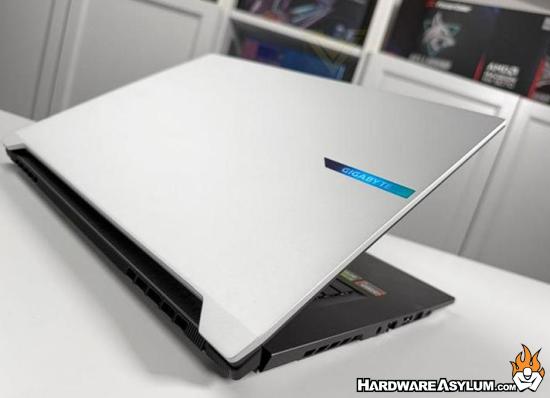
This 16-inch creator and gaming-focused laptop is built around AMD’s latest Ryzen AI 7 350 “Kraken Point” processor, a chip that promises not only strong multi-core performance but also next-generation AI acceleration. Paired with a high-refresh display and a slim form factor, the AERO X16 positions itself as a versatile tool for both productivity and entertainment.
Beyond the core performance, Vortez commended the laptop's excellent thermal management, noting that it remained relatively cool even under heavy load. They also appreciated the inclusion of a comfortable keyboard and a responsive trackpad. While the reviewer did mention a few minor drawbacks, such as the limited port selection and the relatively high price, they ultimately concluded that the Gigabyte Aero X16 EG61H Copilot PC represents a top-tier option for gamers and content creators seeking a powerful and portable machine. For those willing to invest in a premium laptop, this model delivers a compelling combination of performance, features, and design. -
Borderlands 4 Handheld Performance @ TechPowerUp
TechPowerUp put Borderlands 4 through its paces on both devices, delivering a detailed look at how the game runs and what settings are achievable. The reviewer found that while Borderlands 4 is a visually impressive title, it's also quite demanding, requiring some compromises to achieve smooth gameplay on the handhelds. The ROG Ally X consistently outperformed the Steam Deck, offering higher frame rates and the ability to run at higher graphical settings. However, even the Ally X required some tweaking to maintain a consistently enjoyable experience, particularly in more intense combat scenarios.

Borderlands 4 arrives six years after the last game in the series. Bigger and better, it's much more demanding on your hardware, especially when it comes to PC gaming handhelds. How does Borderlands 4 run on the Steam Deck and ASUS ROG Ally X? Find out in our Borderlands 4 handheld performance review.
Beyond the raw performance numbers, TechPowerUp provided valuable insights into the game's optimization and the various settings that impact performance. They highlighted the importance of adjusting resolution and shadow quality to balance visual fidelity and frame rates. The review also offered practical recommendations for achieving the best possible experience on each device, including suggested graphics presets and performance monitoring tips. Overall, TechPowerUp concluded that Borderlands 4 is playable on both the Steam Deck and ROG Ally X, but the Ally X provides a noticeably superior experience, especially for those prioritizing higher frame rates and more detailed visuals.



